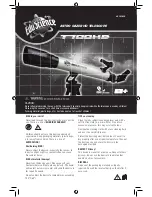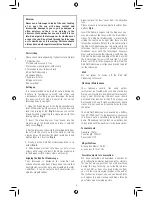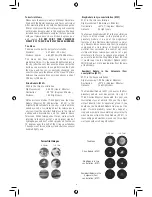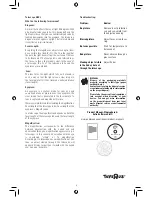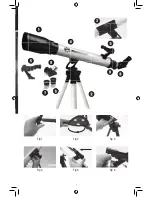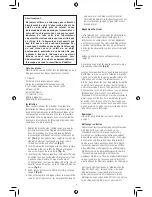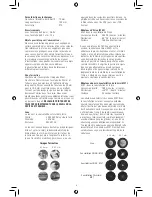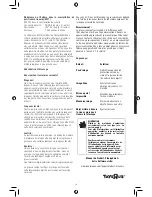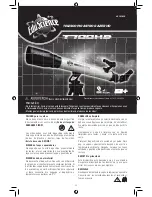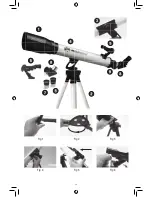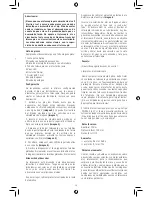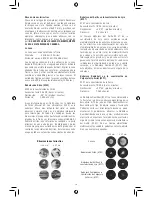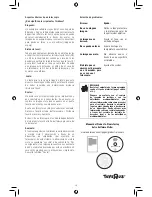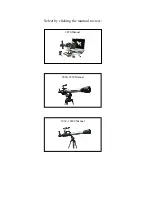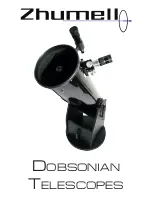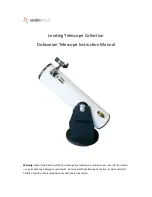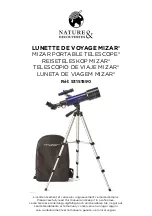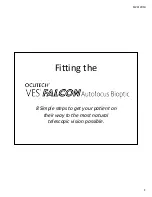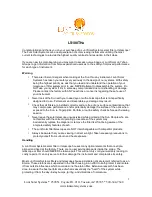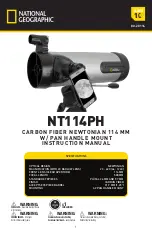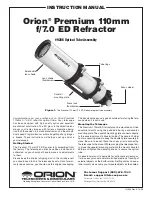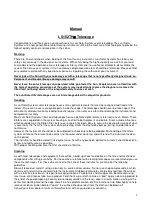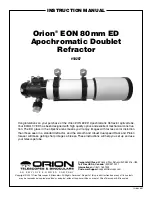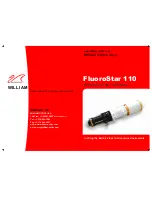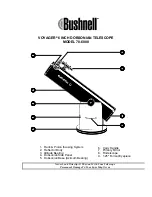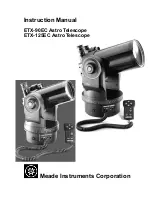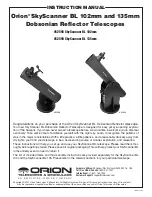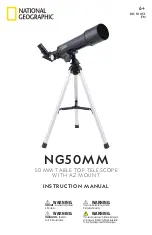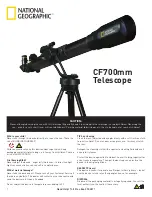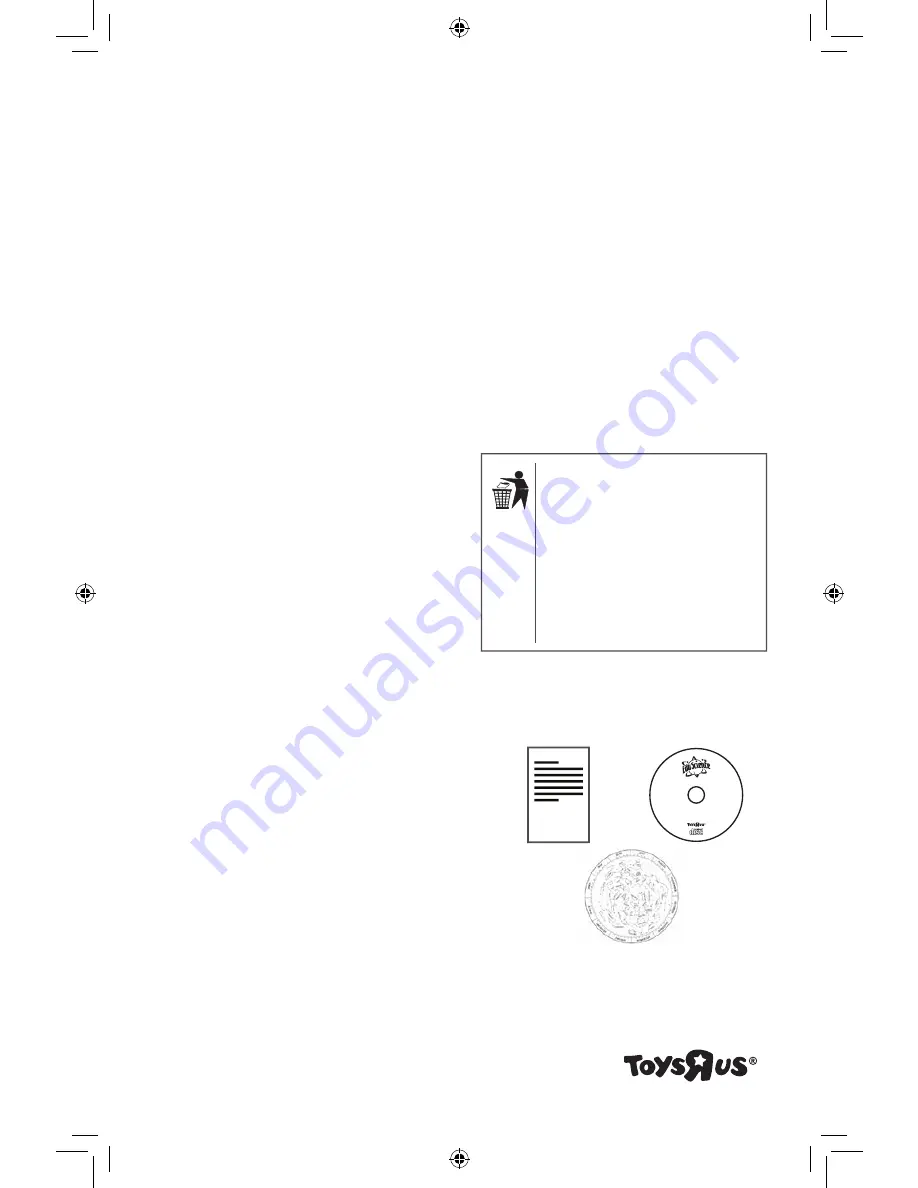
4
5
Telescope ABC’s
What do the following terms mean?
Diagonal:
A mirror that defl ects the ray of light 90 degrees. With
a horizontal telescope tube, this device defl ects the
light upwards so that you can comfortably observe by
looking downwards into the eyepiece. The image in a
diagonal mirror appears upright, but rotated around
its vertical axis (mirror image).
Focal Length:
Everything that magnifi es an object via an optic (lens)
has a certain focal length (FL). The FL is the length of
the path the light travels from the surface of the lens
to its focal point. The focal point is also referred to as
the focus. In focus, the image is clear. In the case of
a telescope, the FL of the telescope tube and the
eyepieces are combined.
Lens:
The lens turns the light which falls on it around in
such a way so that the light gives a clear image in
the focal point after it has traveled a certain distance
(focal length).
Eyepiece:
An eyepiece is a system made for your eye and
comprised of one or more lenses. In an eyepiece, the
clear image that is generated in the focal point of a
lens is captured and magnifi ed still more.
There is a simple formula for calculating the magnifi cation:
Focal length of the telescope tube / Focal length of the
eyepiece = Magnifi cation
In a telescope, the magnifi cation depends on both the
focal length of the telescope tube and the focal length
of the eyepiece.
Magnifi cation:
The magnifi cation corresponds to the difference
between observation with the naked eye and
observation through a magnifi cation apparatus (e.g. a
telescope). In this scheme, observation with the eye
is considered “single”, or 1x magnifi
cation.
Accordingly, if a telescope has a magnifi cation of 30x,
then an object viewed through the telescope will
appear 30 times larger than it would with the naked
eye. See also “Eyepiece.“
Troubleshooting:
Problem:
No picture
Blurred picture
No focus possible
Bad picture
Viewing object visible
in the fi nder, but not
through the telescope
Advice:
Remove dust protection
cap and sun-shield from
the objective opening.
Adjust focus using focus
ring
Wait for temperature to
balance out
Never observe through a
glass surface
Adjust fi nder
DISPOSAL
Dispose of the packaging materials
properly, according to their type (paper,
cardboard, etc).
Contact your local waste disposal service
or environmental authority for information
on the proper disposal.
Please take the current legal regulations
into account when disposing of your
device. You can get more information
on the proper disposal from your local
waste disposal service or environmental
authority.
Product Manual, Planisphere &
Astro Software Visit:
www.exploreone.com/pages/product-manuals
Astro Software CD
Summary of Contents for T700HD
Page 2: ...2 Fig 1 Fig 4 Fig 2 Fig 5 Fig 3 Fig 6 8 8 7 6 5 5 4 3 2 1 9 8 8 8 7 7 6 6 5 5 4 2 1 9 ...
Page 7: ...7 8 8 7 6 5 5 4 3 2 1 9 Fig 1 Fig 4 Fig 2 Fig 5 Fig 3 Fig 6 8 8 8 7 7 6 6 5 5 4 2 1 9 ...
Page 12: ...12 Fig 1 Fig 4 Fig 2 Fig 5 Fig 3 Fig 6 8 8 7 6 5 5 4 3 2 1 9 8 8 8 7 7 6 6 5 5 4 2 1 9 ...
Page 16: ...16 ...

